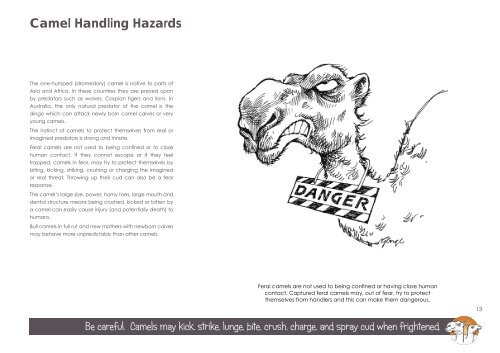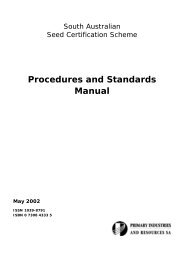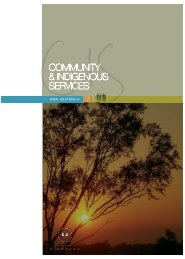Final May 22 Bes Practice Camel Book_web_part1 - Rural Solutions ...
Final May 22 Bes Practice Camel Book_web_part1 - Rural Solutions ...
Final May 22 Bes Practice Camel Book_web_part1 - Rural Solutions ...
- No tags were found...
Create successful ePaper yourself
Turn your PDF publications into a flip-book with our unique Google optimized e-Paper software.
<strong>Camel</strong> Handling HazardsThe one-humped (dromedary) camel is native to parts ofAsia and Africa. In these countries they are preyed uponby predators such as wolves, Caspian tigers and lions. InAustralia, the only natural predator of the camel is thedingo which can attack newly born camel calves or veryyoung camels.The instinct of camels to protect themselves from real orimagined predators is strong and innate.Feral camels are not used to being confined or to closehuman contact. If they cannot escape or if they feeltrapped, camels in fear, may try to protect themselves bybiting, kicking, striking, crushing or charging the imaginedor real threat. Throwing up their cud can also be a fearresponse.The camel’s large size, power, horny toes, large mouth anddental structure means being crushed, kicked or bitten bya camel can easily cause injury (and potentially death) tohumans.Bull camels in full rut and new mothers with newborn calvesmay behave more unpredictably than other camels.Feral camels are not used to being confined or having close humancontact. Captured feral camels may, out of fear, try to protectthemselves from handlers and this can make them dangerous.13Be careful. <strong>Camel</strong>s may kick, strike, lunge, bite, crush, charge, and spray cud when frightened.







